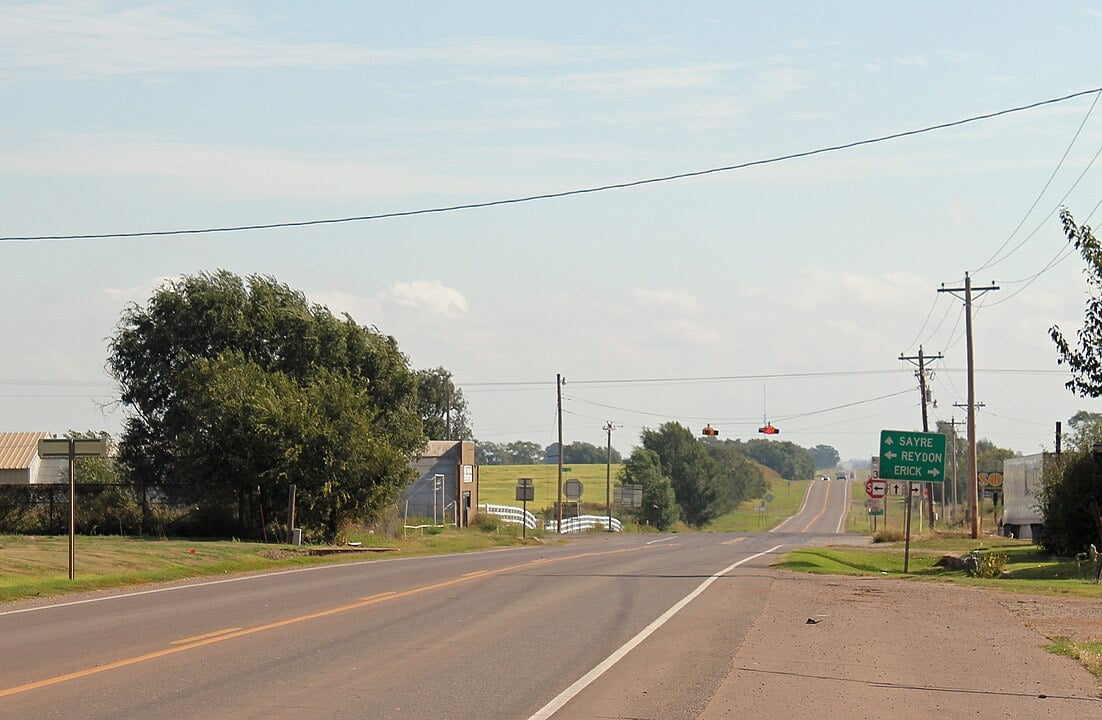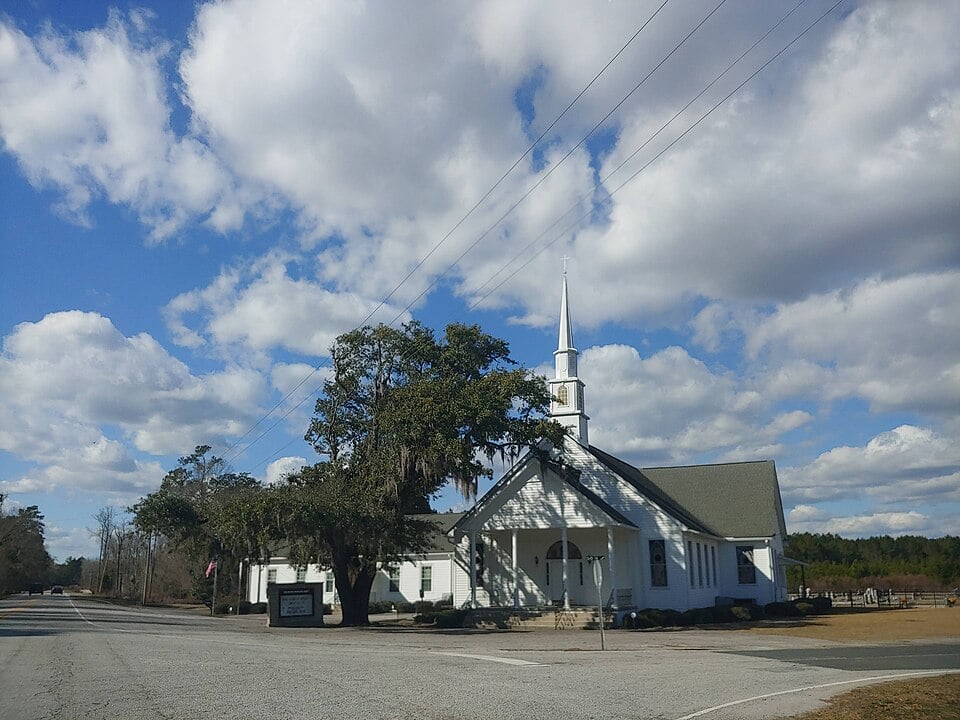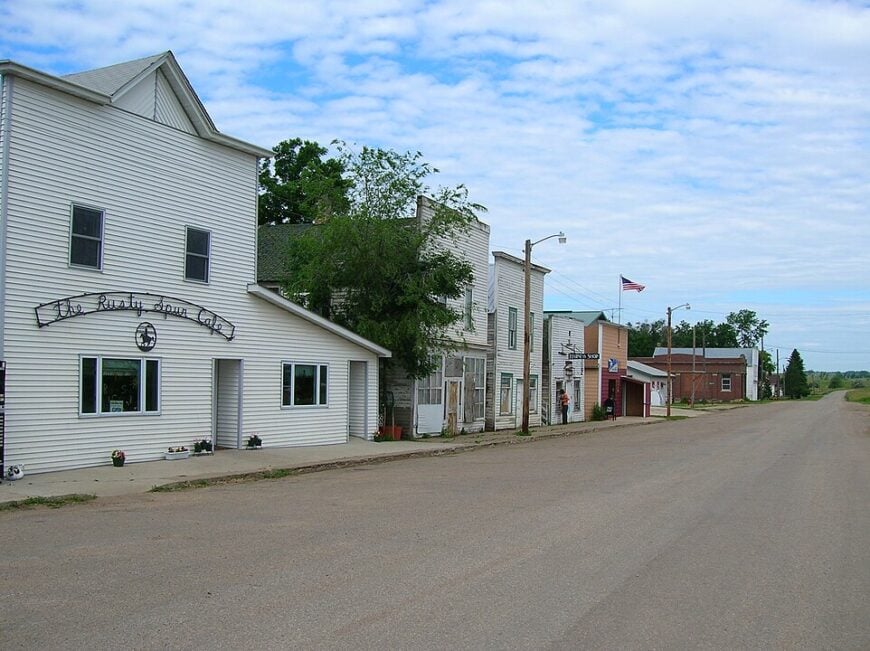
Sometimes, the best escapes are found off the beaten path, where the hustle of daily life gives way to the peaceful whispers of nature. Southeast North Dakota is home to such hidden treasures—small, secluded towns that offer tranquility, charm, and a touch of nostalgia.
I love exploring these places where time seems to slow down, and the beauty of the plains stretches endlessly. Join me as I count down my top 25 secluded towns in this serene corner of North Dakota, each with its own unique allure and secrets waiting to be discovered.
25. Stirum: A Prairie Village Tucked Away

Stirum, North Dakota, rests in Sargent County, surrounded by vast stretches of farmland and prairie that give it an unmistakably secluded feel. Established along a rail line in the early 20th century, it once held more bustle, but now the community has quieted into a scattering of homes and fields.
The setting is simple and expansive—grain bins, open skies, and the steady presence of wind moving through the grass. Those who visit may take in the endless views, follow gravel roads that cut across the plains, or watch sunsets that seem to swallow the horizon.
Agriculture remains the backbone here, defining both the land and the people who stay. Stirum carries the feeling of a place shaped almost entirely by the prairie, where silence is part of everyday life.
Where is Stirum?

Stirum, North Dakota sits in the southeastern part of the state, about 15 miles west of Gwinner in Sargent County. To reach it, you leave State Highway 13 and follow narrow county roads that cross wide stretches of farmland and open prairie.
The town is little more than a crossroads community, with fields pressing close on every side. Out on those flat roads, the horizon seems endless, giving Stirum a solitude that feels vast and unbroken.
24. Cayuga: Quiet Life by the Railroad

Cayuga, North Dakota, may be small, but its story is written in the old rail line that once brought life to its edge of the prairie. What remains today is a handful of streets and a pace that hasn’t hurried in decades.
The town serves as a gateway to nearby Tewaukon National Wildlife Refuge, where wetlands burst with migrating birds and open water reflects the changing skies. On any given day, you might see residents gathering at the café, trucks lined up along gravel roads, or kids pedaling bikes down wide, quiet lanes.
Its strength isn’t in size, but in the way community holds steady even as the world shifts around it. Cayuga leaves you with the sense that sometimes the smallest dots on the map carry the richest roots.
Where is Cayuga?

Cayuga, North Dakota rests in Sargent County near the state’s southeastern border, about 20 miles south of Lisbon. It’s reached by following quiet county roads off State Highway 11, where farmland stretches broad and unbroken across the prairie.
The settlement is small, with only a handful of buildings gathered at the roadside. In Cayuga, the open fields and wide sky create a sense of distance that makes the world beyond feel far away.
23. Havana: A Border Town Retreat

Havana, North Dakota, sits just a few miles from the South Dakota border, a small town that feels like a crossroads between two quiet worlds. Its origins trace back to the railroad era, when the depot drew farmers and shopkeepers into a tight little hub of prairie life.
Today, it’s the kind of place where a single main street holds most of what you need, and neighbors greet each other by name. Visitors often pass through on their way to nearby lakes or the Sheyenne National Grassland, where wide skies and rolling grass offer a change of pace.
Life here is measured less by the clock than by gatherings, church suppers, and the rhythm of small-town traditions. Havana leaves you with the sense that simplicity, when shared in community, becomes something lasting and strong.
Where is Havana?

Havana, North Dakota sits in the southern part of Sargent County, only a few miles north of the South Dakota border and about 25 miles southwest of Wahpeton. Travelers reach it by way of State Highway 32, which narrows into quiet streets surrounded by farmland.
The town is small, with its grain elevators and a few blocks of homes set against the open prairie. In Havana, the sweep of fields and the closeness of the horizon give it a stillness that feels far removed from the rush of larger places.
22. Oakes: A Small Town Surrounded by Fields

Oakes, North Dakota, feels like a town built on crossroads—set where highways meet and framed by a patchwork of fields, yet still far from the press of city life. Founded in the 1880s with the coming of the railroad, it grew into a hub for trade and grain, a role it continues to hold today.
The town has a sturdier pulse than many rural places, with schools, shops, and community events giving it an energy that balances against the quiet prairie beyond. Visitors can catch a summer baseball game, stop at local diners, or head out toward nearby fishing lakes and wildlife refuges.
Agriculture and small industry drive its rhythm, but its strength comes just as much from the way people invest in the town itself. Oakes lingers with you as a reminder that even in the wide Dakotas, some small towns still carry a sense of momentum and pride.
Where is Oakes?

Oakes, North Dakota is located in Dickey County in the state’s southeastern corner, about 50 miles south of Jamestown. It’s reached by State Highways 1 and 11, where the drive crosses wide farmland and stretches of prairie before settling into the small city.
As a regional hub, Oakes has more activity than many nearby towns, yet it remains surrounded by open fields and distant horizons. That blend of bustle and prairie quiet makes it feel both connected and apart, a place where space always stretches just beyond the edge of town.
21. Ludden: Small Community on the Prairie

Ludden, North Dakota, sits close to the James River in Dickey County, a quiet community that has never needed more than a few blocks to make its mark. Established in the late 1800s, it once bustled with grain elevators and rail traffic, though today it feels more like a pause in the prairie than a stop along the way.
The village has a gentle rhythm—morning light catching on church steeples, gravel roads leading into open fields, and evenings when silence settles across the horizon. Travelers pass through on their way to hunt or fish along the river, or to simply follow backroads that wind endlessly through farmland.
Farming remains its anchor, but Ludden carries more the spirit of endurance than growth. What stays with you is the quiet certainty of a place that holds on, even as the world shifts around it.
Where is Ludden?

Ludden, North Dakota lies in Dickey County near the South Dakota border, about 15 miles southeast of Ellendale. The approach comes by way of County Road 3, a two-lane route that runs through farmland and prairie with few signs of traffic.
The town itself is little more than a small cluster along the road, surrounded by open fields that stretch in every direction. Out here, the flat land and quiet roads give Ludden the feeling of a place set gently apart from the world.
20. Glover: A Fading Hamlet

Glover, North Dakota, is little more than a name on the map today, a near-forgotten settlement tucked into the prairies of Dickey County. Once it had a post office and a few scattered businesses, but now it survives mostly in memory, with the land taking back what people left behind.
The setting is stark yet beautiful—open sky above, winds that never stop moving, and the sound of meadowlarks where train whistles once echoed. For those who go looking, the story of Glover is found not in buildings but in the landscape itself, and in the family histories still tied to the soil.
Hunters, birders, and prairie wanderers may pass through, finding in its emptiness a kind of rare stillness. Glover endures as a reminder that even the smallest places leave their mark, if only in whispers carried on the plains.
Where is Glover?

Glover, North Dakota sits in Dickey County in the southeastern part of the state, about 10 miles northeast of Oakes. You reach it by way of local county roads branching off State Highway 1, passing through wide farmland and open prairie.
The community is tiny, with only a scattering of homes and silos marking its place on the map. In Glover, the horizon seems to stretch without end, giving the area a quiet remoteness that feels untouched.
19. Milnor: Small Town with Wide Horizons

Milnor, North Dakota, rests in Sargent County where the prairie opens wide but the town itself feels lively compared to its quieter neighbors. Founded in the late 19th century with the railroad, it grew into a local hub, and traces of that history remain in the grain elevators that still stand tall at its edge.
The streets carry an everyday rhythm—kids riding bikes past storefronts, the smell of coffee drifting from diners, and community gatherings filling the calendar. Visitors can tee off at the golf course, fish or boat on nearby Lake Elsie, or explore the Sheyenne National Grassland just a short drive away.
Farming is the backbone here, but small businesses and recreation give the town a steady, well-rounded pulse. Milnor leaves you with the impression of a prairie town that manages to feel both rooted and quietly vibrant at the same time.
Where is Milnor?

Milnor, North Dakota is found in Sargent County, about 30 miles west of Wahpeton and the Red River Valley. The town is reached by State Highway 13, a straight two-lane road that runs through broad farmland and open prairie.
Though larger than nearby hamlets, Milnor remains surrounded by fields and distant horizons that define the landscape. In the quiet of its streets, you sense the wide spaces pressing close, making it feel both settled and remote at once.
18. Englevale: Prairie Stillness Defined

Englevale, North Dakota, sits tucked into the prairie of Ransom County, a place so small it can be missed in a blink, yet it carries a story of resilience. Founded around the railroad, it once had the bustle of elevators and shops, though today only a few homes and traces of its past remain.
The feeling here is one of stillness—wind sweeping across open fields, gravel roads stretching straight to the horizon, and silence broken only by the hum of passing farm equipment. Travelers might pause to trace the outlines of old buildings, or continue on toward the Sheyenne River valley where hills and forests break the flat prairie.
Agriculture is the quiet thread that ties Englevale to the land, steady and enduring. What lingers most is its sense of pause, as though time itself decided to slow down here and never quite started again.
Where is Englevale?

Englevale, North Dakota rests in Ransom County, about 15 miles southwest of Lisbon. The way in follows county roads that branch from State Highway 32, carrying you through rolling farmland and open prairie.
The town itself is only a small cluster of homes and grain bins, quiet against the sweep of fields. Out on those roads, Englevale feels like a dot on the plain where the horizon never seems to end.
17. Elliott: A Hidden Railroad Town

Elliott, North Dakota, rests in Ransom County, a hamlet that began as a rail stop and has since faded into one of those places where history whispers more than it shows. At its height, the town had shops, a post office, and a small community clustered around the tracks, but today only a few homes and memories remain.
The setting feels open and windswept—prairie stretching in all directions, gravel roads leading to distant farms, and skies so wide they seem to swallow the horizon. Those who come through often do so on their way to hunt, fish, or simply follow the Sheyenne River valley nearby.
Farming anchors the land around Elliott, though the town itself has become part of the prairie’s quiet rhythm. What stays with you is not what stands, but the reminder that even the smallest dots on the map carry stories worth remembering.
Where is Elliott?

Elliott, North Dakota lies in Ransom County, about 12 miles south of Lisbon and just east of State Highway 32. To reach it, you turn onto narrow county roads that run straight through farmland, with few trees to break the view.
The settlement is small and scattered, with only a handful of buildings marking its spot on the prairie. In Elliott, the wide sky and open ground create a stillness that makes it feel quietly apart from everywhere else.
16. Stirton: An Almost Forgotten Place

Stirton, North Dakota, is one of those nearly forgotten prairie settlements, tucked into Barnes County where open farmland seems to stretch without end. Once a modest stop on the rail line, it never grew large, and today it survives more as a name than a place, with fields reclaiming what was left behind.
The land here feels wide and untamed—grain waving in the wind, distant silos breaking the horizon, and skies painted with long Dakota sunsets. Visitors won’t find a bustling main street, but they will find quiet backroads leading toward the Sheyenne River valley and the kind of stillness that settles deep.
Farming defines everything around Stirton, steady and unchanging even as the town itself has faded. To stand here is to feel how the prairie remembers, holding the memory of places long after people have gone.
Where is Stirton?

Stirton, North Dakota is tucked in Barnes County, about 12 miles northwest of Valley City. It’s reached by gravel county roads that branch away from Interstate 94, leading into rolling farmland and quiet prairie draws.
The community is little more than a name on the map now, with open fields and fencelines where a town once stood. Out there, the wind across the hills carries a solitude that feels like the land has reclaimed its silence.
15. Dickey: A Town with Deep Roots

Dickey, North Dakota, rests along the James River in LaMoure County, a small town that has held its place on the prairie for more than a century. Founded with the arrival of the railroad in the late 1800s, it still carries that heritage in its grain elevators and quiet main street.
The atmosphere is simple and unhurried—neighbors gathering at the café, the sound of trains rolling past, and wide fields pressing close on every side. Visitors might fish or canoe the James, drive the backroads that weave through farmland, or catch a glimpse of local history in the town’s older buildings.
Farming remains the steady backbone, tying families to the soil across generations. Dickey leaves you with the impression of a prairie town that endures not through size, but through its quiet sense of belonging.
Where is Dickey?

Dickey, North Dakota sits in LaMoure County, about 20 miles southeast of Jamestown along State Highway 56. The drive in crosses stretches of farmland and open prairie before narrowing into a small grid of streets.
The town is modest, with a few blocks of homes and grain bins set against the wide landscape. In Dickey, the quiet roads and endless sky create a seclusion that feels steady and unbroken.
14. Gwinner: A Town on the Edge of the Prairie

Gwinner, North Dakota, sits in Sargent County, a prairie town that feels both rooted in the land and shaped by industry. Unlike many small Dakota towns that faded with the railroad, Gwinner found new life with the establishment of the Bobcat manufacturing plant, which still hums at its edge and anchors the community.
The town’s rhythm blends the sound of prairie winds with the steady pulse of machinery, giving it a unique balance of rural calm and working energy. Visitors can head out to nearby Lake Tewaukon for fishing and birdwatching, play a round of golf, or simply wander the quiet streets that circle out from its center.
Farming still surrounds the town, but industry has given Gwinner a sturdier foundation than most of its neighbors. It’s a place that shows how a small town can thrive when work and land move hand in hand.
Where is Gwinner?

Gwinner, North Dakota is located in Sargent County in the state’s southeast, about 60 miles southwest of Fargo. The town is reached by State Highway 13, a long, open road that cuts across prairie farmland and gentle rolling fields.
Known for its manufacturing plant and small-town center, Gwinner stands out as a hub in an otherwise rural stretch. Even so, the wide horizons around it remind you how quickly the prairie can quiet the world beyond.
13. Verona Colony: A Secluded Hutterite Community

Verona Colony, North Dakota, is a Hutterite settlement tucked into the farmland of LaMoure County, set apart by both geography and way of life. Unlike nearby towns, it isn’t marked by a main street or shops, but by neat clusters of communal homes, barns, and fields worked in unison.
The atmosphere is purposeful and quiet, with the sound of tractors in the distance, children at play, and the steady rhythm of shared labor carrying through the day. Visitors don’t come for tourism so much as to glimpse a way of living—handmade goods, fresh produce, and a community that moves together rather than apart.
Farming, craftsmanship, and tradition form the backbone here, shaping every part of daily life. Verona Colony leaves you with the impression of a place where simplicity and community are not ideals, but a lived reality.
Where is Verona Colony?

Verona Colony, North Dakota lies in LaMoure County, about 5 miles south of the small town of Verona and roughly 30 miles east of Ellendale. To get there, you leave State Highway 1 and follow narrow gravel roads that weave through farmland and open prairie.
The colony itself is a Hutterite settlement, with a cluster of homes and farm buildings surrounded by broad fields. Out on those backroads, the sweep of sky and land gives it a quiet separation from the rest of the world.
12. McLeod: A Riverside Hamlet

McLeod, North Dakota, rests in the Sheyenne River Valley of Ransom County, a spot where wooded hills break the monotony of open prairie and give the town a tucked-away feel. Established in the late 1800s, it grew around farming and local trade, though today it’s more a scattering of homes than a bustling settlement.
The mood here is peaceful—river breezes moving through cottonwoods, gravel roads winding into the hills, and nights when the stars seem especially close. Visitors can fish or paddle the Sheyenne, hike nearby trails, or explore the winding backroads that reveal views few ever see.
Agriculture remains its quiet foundation, but the landscape itself feels like the true anchor of McLeod. It’s the kind of place that reminds you how seclusion can carry both beauty and calm in equal measure.
Where is McLeod?

McLeod, North Dakota rests in Ransom County, about 18 miles south of Lisbon in the Sheyenne River Valley. You reach it by following State Highway 27, then turning onto smaller county roads that dip into rolling hills and wooded river bends.
The community is small, with just a few homes and farms nestled close to the water’s edge. In McLeod, the winding river and sheltering hills create a sense of seclusion that feels naturally tucked away.
11. Stirling: A Quiet Spot Between Fields

Stirling, North Dakota, is one of those places that now exists mostly in memory, a former settlement in Burleigh County where the prairie has reclaimed nearly everything. Established in the late 1800s, it once had a post office and a small cluster of families, but today only traces remain, hidden along gravel roads south of Bismarck.
The setting feels open and forgotten—endless fields rolling into horizon, the sound of wind moving over grass, and silence where daily life once unfolded. Travelers passing through find little to mark the spot, except perhaps a sense of how quickly time can fold a town back into the land.
Farming continues all around, steady as ever, but Stirling itself has slipped into the soil it depended on. What lingers is a reminder that not every town survives in buildings—some live on only in the stories that locals still tell.
Where is Stirling?

Stirling, North Dakota sits in Emmons County, about 12 miles northwest of Linton near the Missouri River. The approach comes along quiet gravel roads branching off U.S. Highway 83, with farmland and prairie stretching wide on both sides.
The community today is little more than traces, with open fields where buildings once stood. Out on those roads, the sweep of the Missouri breaks into view, adding to the feeling of a place long set apart.
10. Fort Ransom: A Hidden Gem Nestled in the Sheyenne River Valley
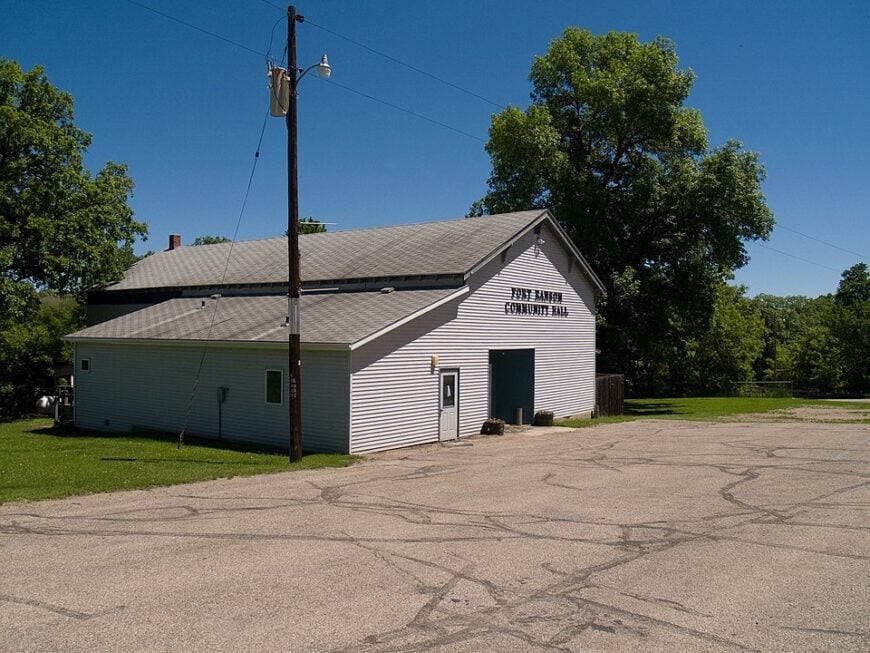
Fort Ransom, with a population of around 80 residents, is a quaint village surrounded by lush forests and rolling hills. I enjoy visiting Fort Ransom State Park nearby, where hiking, camping, and horseback riding offer immersive experiences in nature.
The town thrives on agriculture and tourism, with local artisans contributing to its small but vibrant community. What makes Fort Ransom so secluded is its location within the scenic Sheyenne River Valley, far from bustling highways and urban centers, providing a peaceful ambiance away from the hustle and bustle.
Where is Fort Ransom?
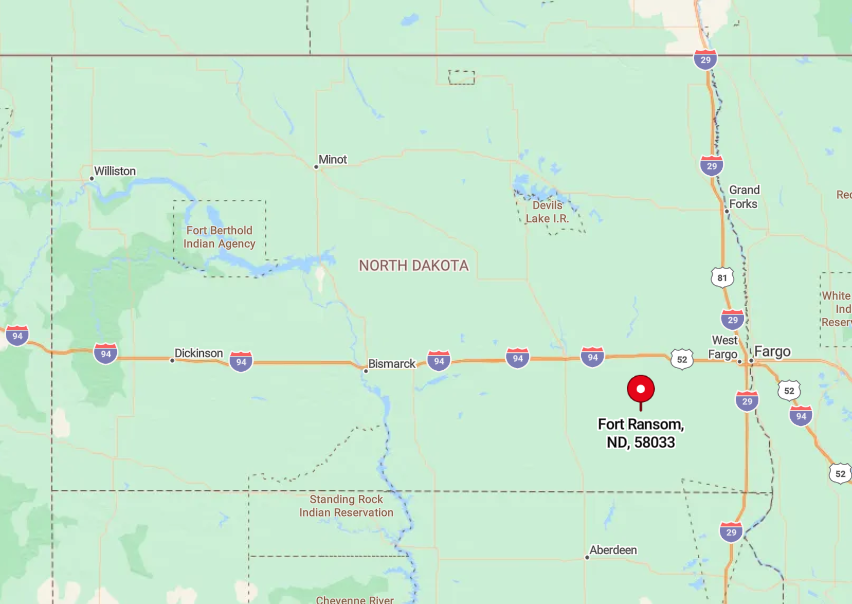
Nestled in Ransom County, Fort Ransom is situated in southeastern North Dakota along the Sheyenne River. Its seclusion is heightened by the surrounding forests and lack of major roadways, making it a tranquil retreat.
I usually take State Highway 46 and then County Road 21 to get there, enjoying the scenic drive through the countryside. The town’s remote setting amidst natural beauty makes it a perfect escape for those seeking solitude and outdoor adventure.
9. Marion: The Quiet Charm of a Retreat in the Heartland
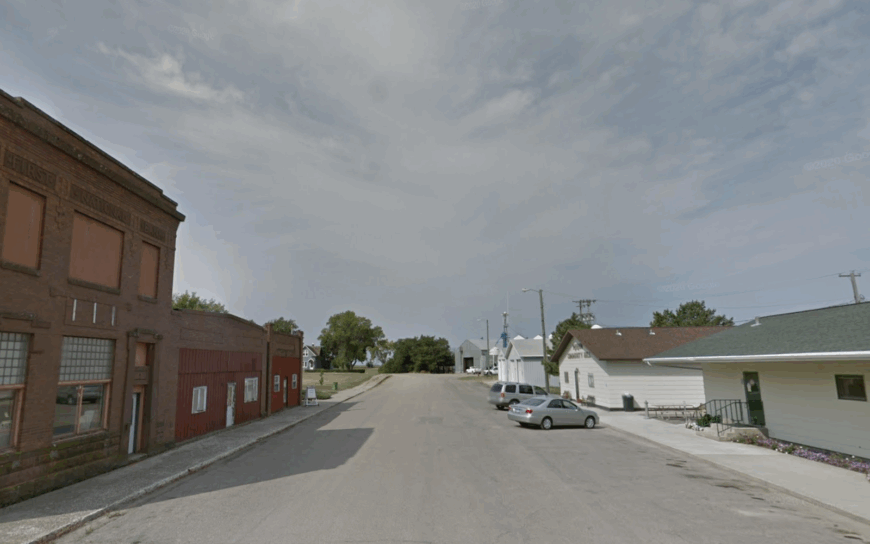
Marion is a small town with approximately 130 residents, offering a serene environment amidst expansive landscapes.
I appreciate its peaceful streets and friendly locals, with nearby opportunities for fishing and bird watching at local lakes like Lake LaMoure. Agriculture is the mainstay industry here, and the vast farmlands contribute to its spacious and open feel.
Marion’s seclusion comes from its rural setting and low population density, making it an ideal escape for those seeking tranquility in North Dakota’s heartland. The town’s annual “Marion’s Summerfest” is a little-known celebration that brings the community together in a festive spirit.
Where is Marion?
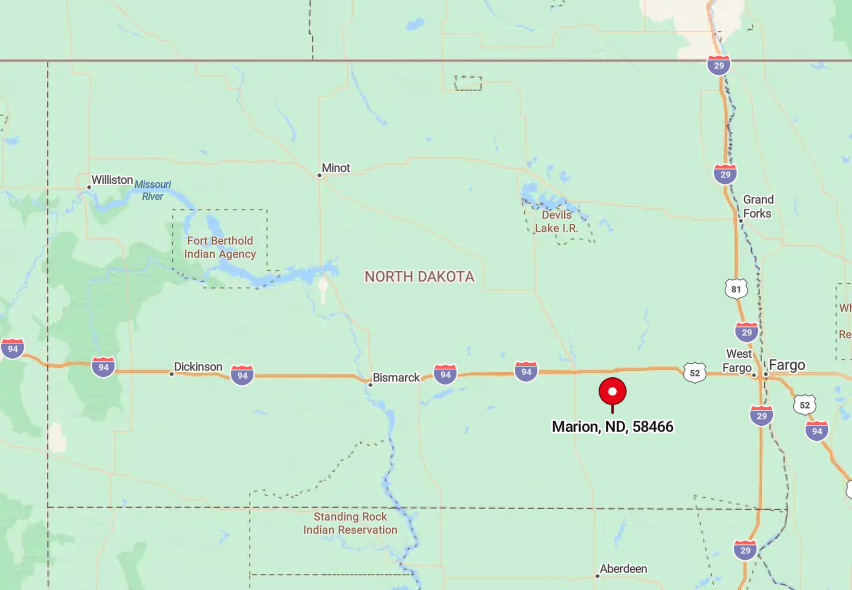
Located in LaMoure County, Marion sits quietly in southeastern North Dakota, away from major urban areas. Its secluded nature is due to the surrounding farmlands and minimal traffic, providing a sense of calm and isolation.
To reach Marion, I usually take State Highway 27, enjoying the gentle roll of the plains along the way. The town’s remote location makes it a peaceful retreat, perfect for unwinding and embracing the simplicity of rural life.
8. Sheldon: Tiny Town with Big Horizons
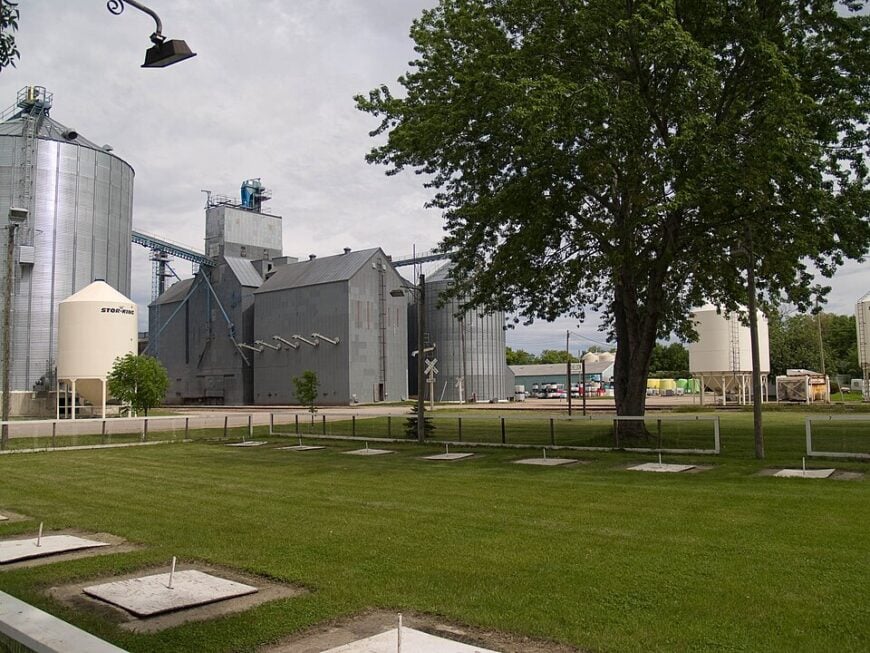
Sheldon boasts a small population of about 100 people, offering expansive surroundings and open skies. I find that the town’s quiet streets and close-knit community make for a relaxing visit. With agricultural roots, Sheldon is surrounded by vast fields that stretch to the horizon, providing a sense of space and freedom.
Its seclusion is accentuated by the low population and the serenity that comes from being nestled in North Dakota’s countryside. The local Sheldon Museum is a hidden gem that tells the story of the area’s rich history.
Where is Sheldon?

Sheldon is situated in Ransom County in southeastern North Dakota. Its remote location, away from major highways and cities, contributes to its secluded atmosphere.
I often take County Road 54 to get there, enjoying the peaceful drive through rural landscapes. The town’s isolation and the sweeping prairie views make it an ideal spot for those seeking solace and a connection with nature.
7. Verona: A Peaceful Hamlet Off the Beaten Path
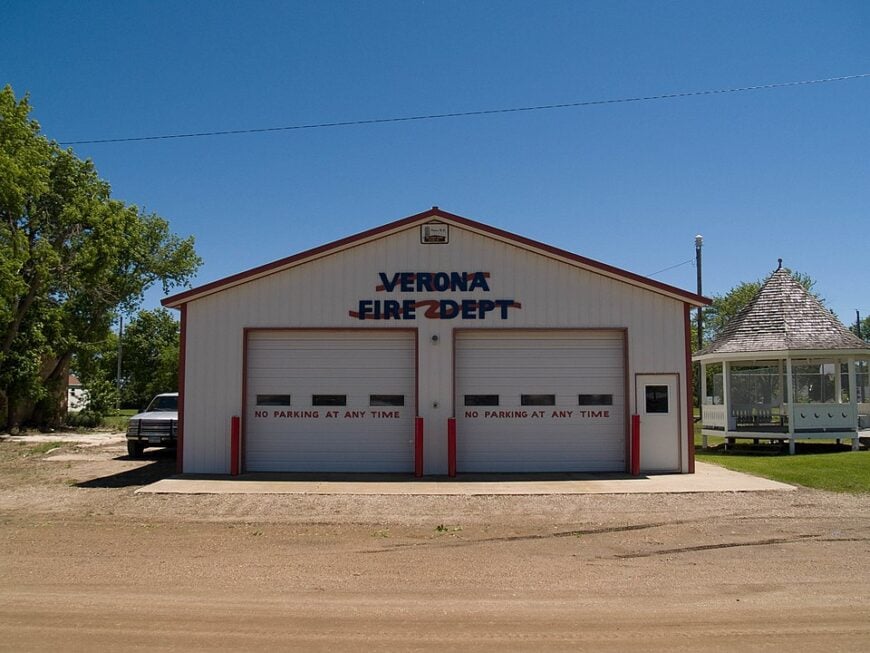
With a population nearing 85, Verona offers a quiet retreat amidst farmland and prairie. I enjoy the simplicity of life here, where local cafes and community events bring people together. Agriculture is the backbone of Verona, and the surrounding fields create a picturesque backdrop.
Its seclusion stems from its location away from crowded places, offering a chance to experience the quiet simplicity of rural North Dakota. The annual Verona Threshing Bee is a unique event that showcases antique farm machinery, a delight for history enthusiasts like me.
Where is Verona?

Located in LaMoure County, Verona sits off the beaten path in southeastern North Dakota. The town’s seclusion is enhanced by the open farmland and minimal nearby development.
I usually reach Verona via State Highway 1, taking in the expansive views of the plains. Its isolated setting makes it a perfect spot for relaxing and disconnecting from the fast-paced world.
6. Monango: Embracing Solitude in the Prairie
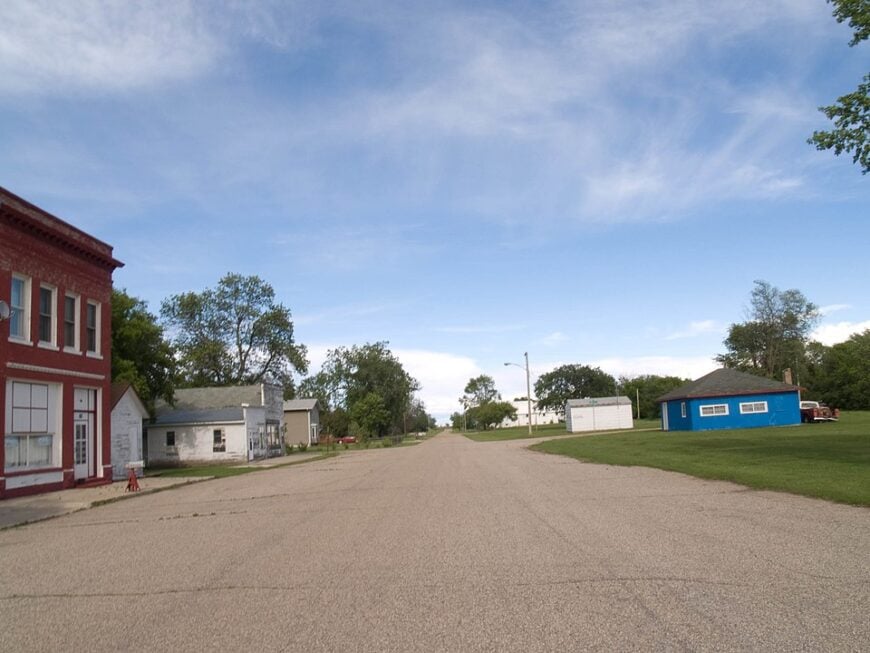
Monango is a tiny town with around 36 residents, offering a profound sense of peace and solitude. The town’s quiet streets and minimal traffic make it a haven for those looking to disconnect. Primarily an agricultural community, Monango’s remoteness and small population create a simple, unhurried lifestyle.
I find its seclusion appealing, as it allows for deep relaxation and reflection amidst the vast prairie. Birdwatching here is a hidden treasure, with the nearby wetlands attracting a variety of species.
Where is Monango?
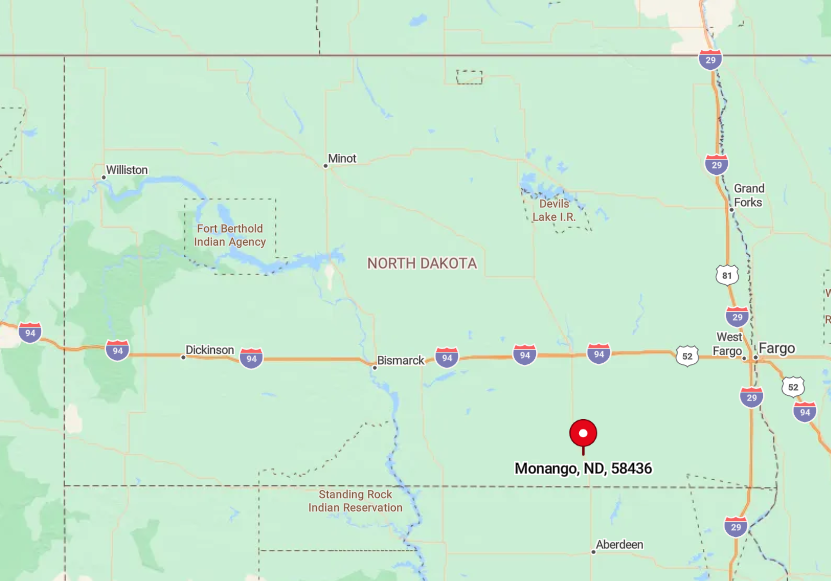
Monango is located in Dickey County in southeastern North Dakota. Its remote position, surrounded by open prairie and farmland, adds to its secluded charm.
Getting there often involves traveling along lesser-known county roads, which I find adds to the adventure. The town’s distance from major cities and highways makes it an ideal escape into solitude.
5. Fullerton: Serenity Amidst the Rolling Plains
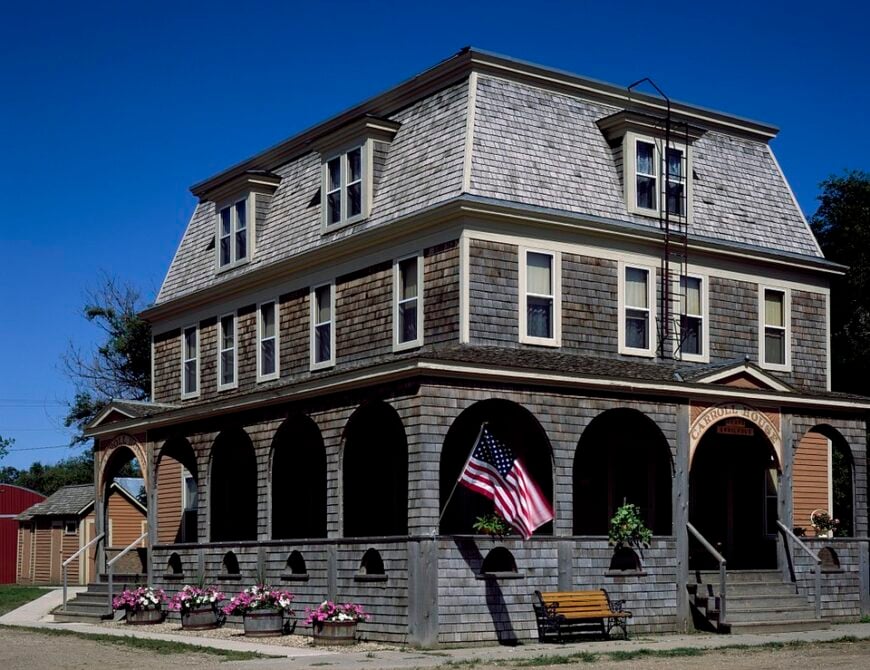
Fullerton, with a population of about 54, offers a peaceful atmosphere amid the rolling plains. I enjoy visiting the local parks and community centers that reflect the town’s friendly spirit.
Agriculture plays a central role here, and the undeveloped land surrounding Fullerton provides a tranquil environment. Its seclusion is due to the wide-open spaces and the quietness that comes from being far removed from urban life. The nearby Maple River provides a serene spot for fishing and picnicking.
Where is Fullerton?
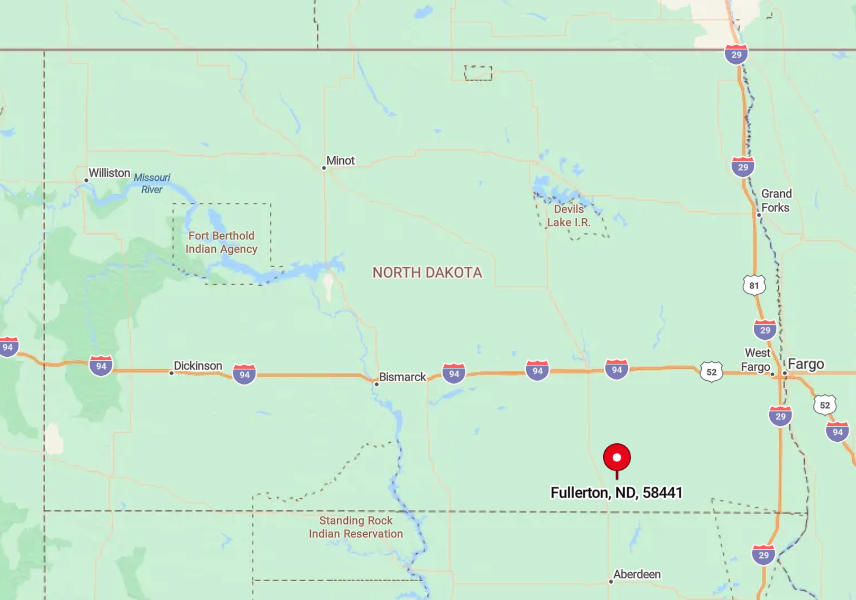
Situated in Dickey County, Fullerton lies in southeastern North Dakota, tucked away from bustling areas. The town’s seclusion is enhanced by its lack of nearby major roads and the expanse of farmland.
I usually drive along State Highway 11 to reach Fullerton, enjoying the serene landscape along the way. It’s a place where one can truly appreciate the stillness and beauty of the plains.
4. Forbes: Where Silence is Golden

Forbes is a small town near the South Dakota border with around 50 residents. I find its quiet streets and the surrounding open spaces offer a unique sense of calm. The town’s economy is rooted in agriculture, and the minimal traffic adds to its tranquil atmosphere.
Forbes’ secluded location provides vast horizons and a peaceful setting, ideal for those who cherish silence and solitude. The old Forbes Schoolhouse is a hidden historical site that offers a glimpse into the past.
Where is Forbes?
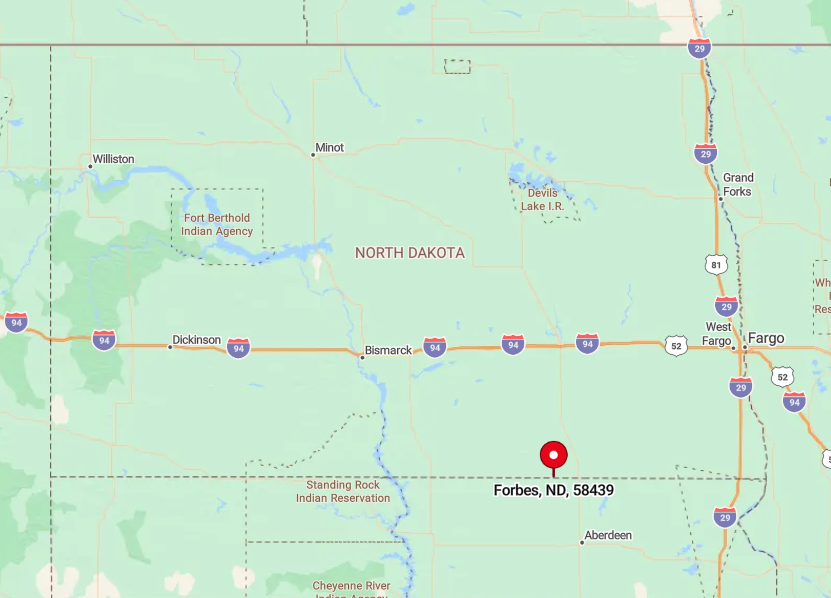
Located in Dickey County at the southern edge of North Dakota, Forbes is nestled near the border with South Dakota. Its remote location and the vast open spaces around it contribute to its secluded nature.
I reach Forbes by taking State Highway 11, traversing quiet roads with little traffic. The town’s isolation makes it a perfect spot for uninterrupted relaxation and contemplation.
3. Mantador: A Village Surrounded by Nature
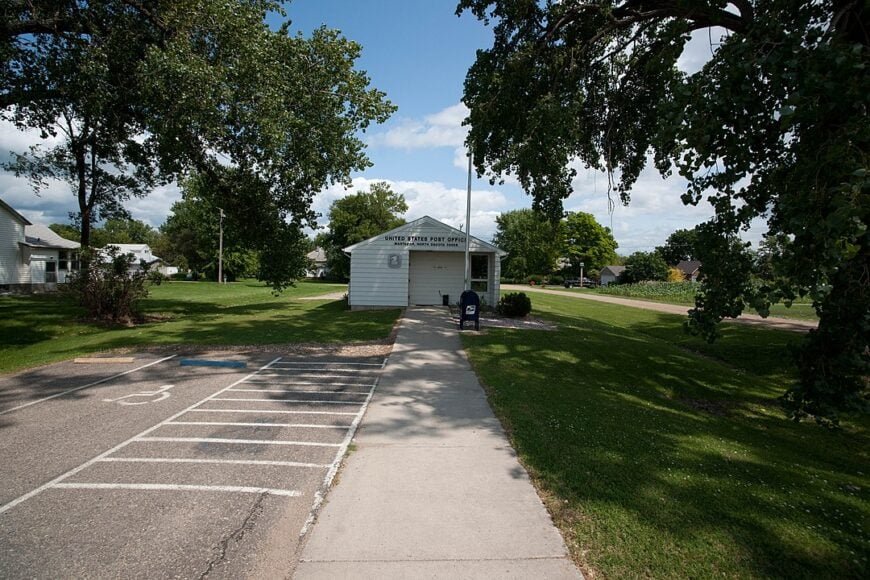
Mantador has a welcoming community of about 64 people, surrounded by natural landscapes that I find incredibly soothing. The town offers access to nearby wildlife refuges and recreational areas perfect for hiking and birdwatching.
Agriculture and small businesses form the core of Mantador’s economy. Its seclusion is due to the surrounding nature and its distance from larger towns, making it a quiet retreat far from city life. The Sts. Peter and Paul Church in Mantador is a beautiful hidden gem with stunning architecture worth visiting.
Where is Mantador?
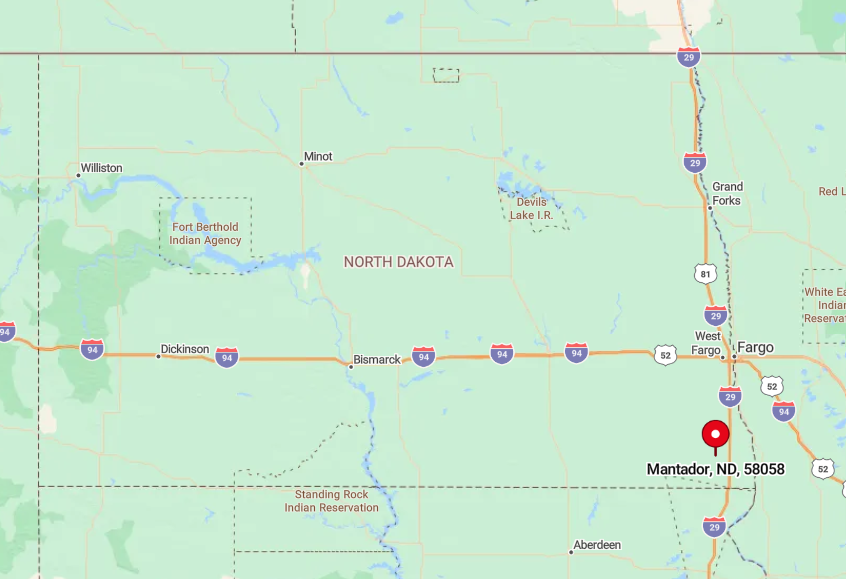
Mantador is located in Richland County in southeastern North Dakota. Its secluded setting is enhanced by the natural surroundings and minimal development in the area.
I often get there by traveling along State Highway 13 and then taking county roads that wind through the countryside. The journey itself is peaceful, leading to a village that feels worlds away from the urban rush.
2. Kathryn: Seclusion Along the Sheyenne River

Kathryn is a tiny town with about 52 residents, situated along the scenic Sheyenne River. I love the picturesque scenery and the opportunities for fishing, canoeing, and enjoying riverside picnics. The town’s economy revolves around agriculture and outdoor recreation.
Kathryn’s natural seclusion, with the river and surrounding landscapes, provides a peaceful getaway that’s perfect for reconnecting with nature. The nearby Sheyenne State Forest offers trails and hidden spots that are a delight for any nature enthusiast like me.
Where is Kathryn?
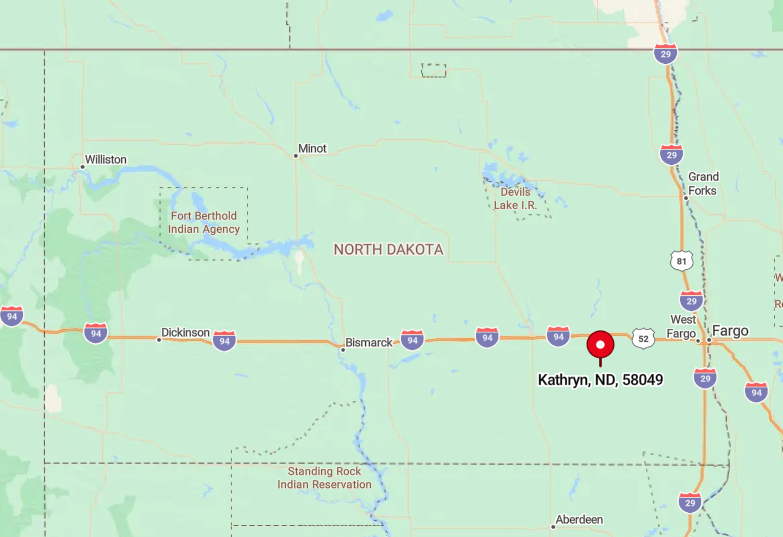
Nestled in Barnes County, Kathryn lies in southeastern North Dakota along the Sheyenne River. Its secluded location is accentuated by the river valley and minimal nearby settlements.
I usually take State Highway 46 to reach Kathryn, appreciating the rolling hills and lush greenery. The town’s setting along the river makes it a serene escape from everyday life.
1. Berlin: A Tiny Town with Vast Open Spaces
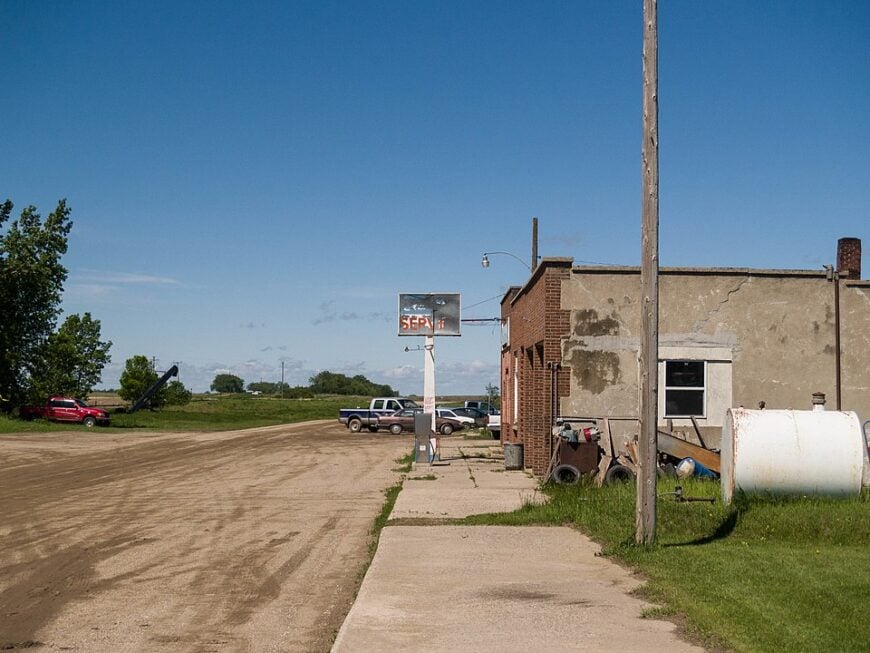
Berlin is one of the smallest towns on my list, with a population of just around 35 people. The town offers expansive open spaces and a tranquil atmosphere that I find incredibly relaxing. Agriculture is the mainstay here, and the surrounding farmlands stretch as far as the eye can see.
Berlin’s seclusion stems from its very small population and its location amidst the vast plains, making it perfect for those seeking solitude and serenity. The ruins of the old Berlin School are a hidden historical site that tells stories of the town’s past.
Where is Berlin?
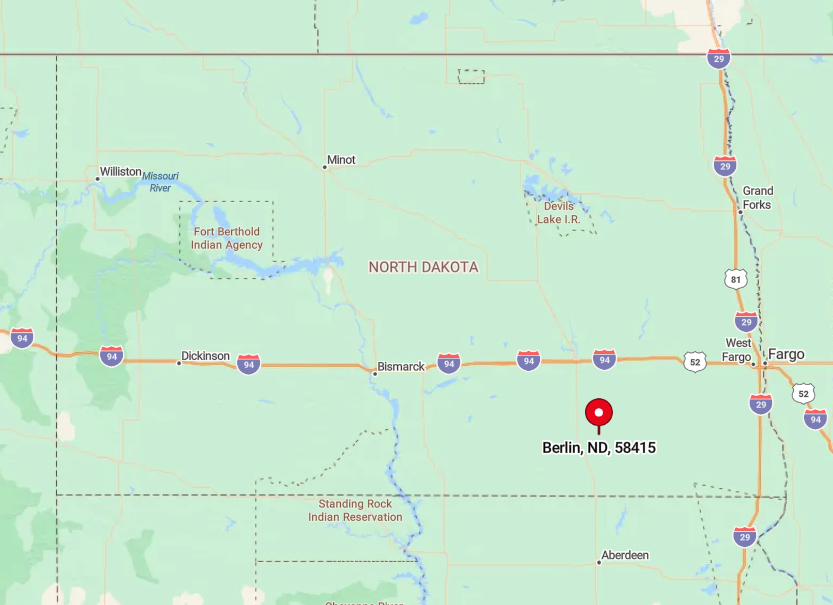
Located in LaMoure County, Berlin sits quietly in southeastern North Dakota. The town’s remote location, away from major highways and larger towns, adds to its secluded charm.
I reach Berlin via County Road 35, enjoying the peaceful drive through the open countryside. The vast open spaces and the quiet of the plains make Berlin an ideal destination for anyone looking to escape into tranquility.



